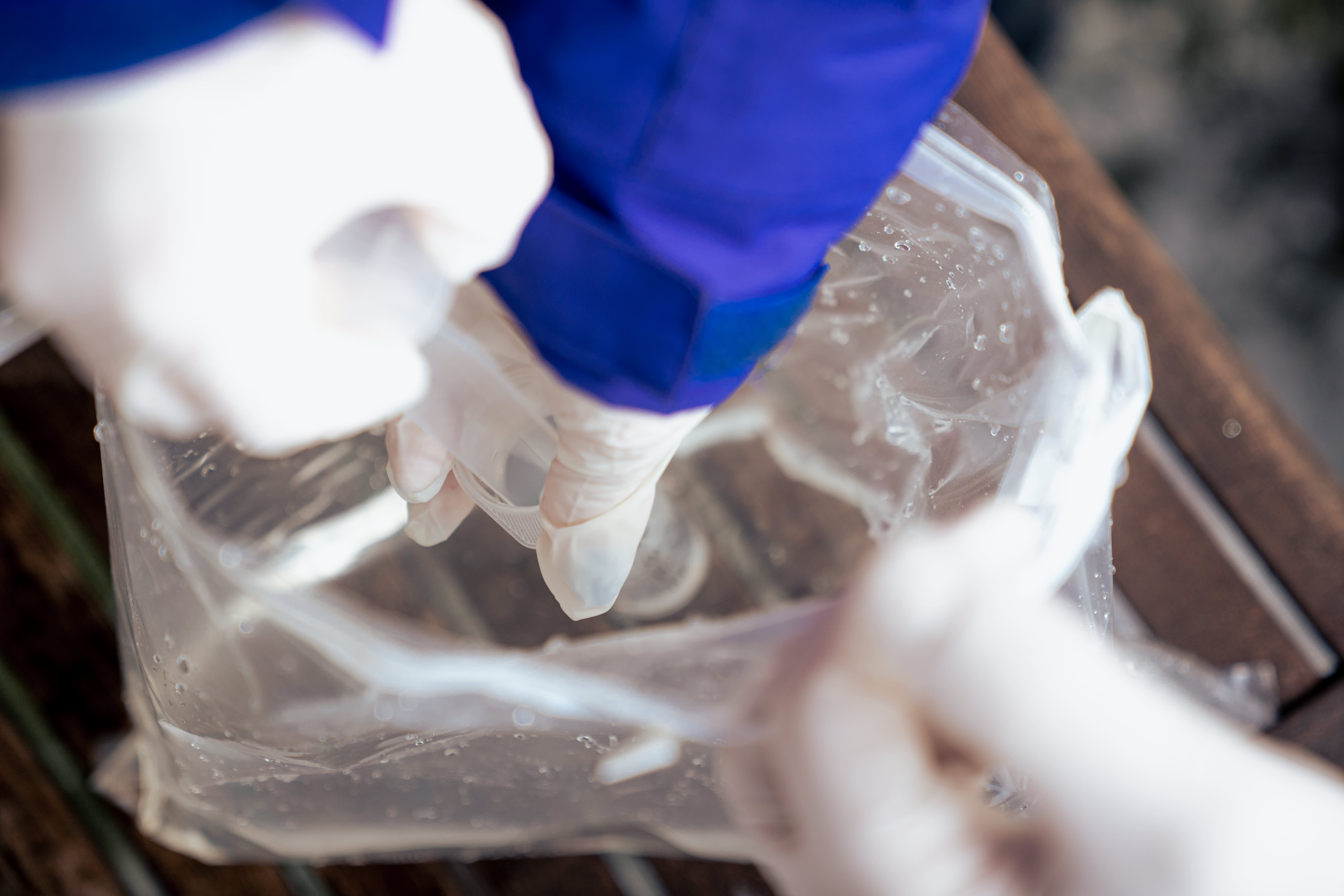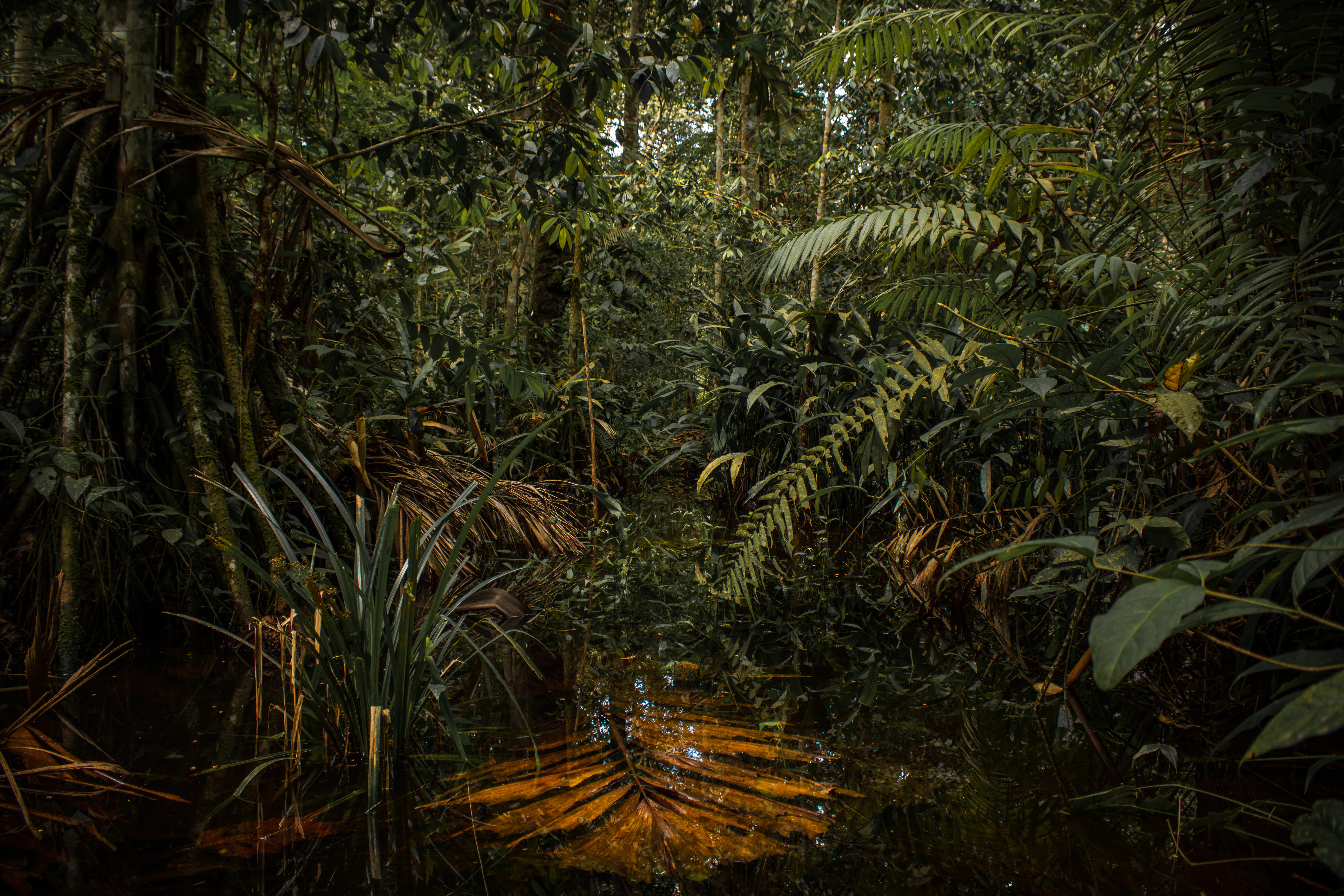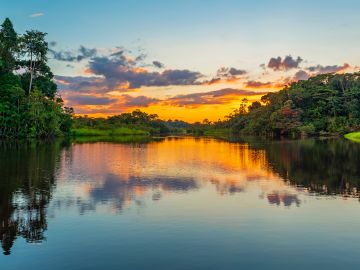This year, as part of our Nature First commitment, we’re thrilled to have secured a partnership with NatureMetrics, a science-tech company. Together with the International Union for Conservation of Nature (IUCN), NatureMetrics have created a project to support the building of the eBioAtlas – an intricate atlas of the world’s species, that can help inform future global conservation action. And this partnership means our travellers can get directly involved in the cutting-edge species mapping process by booking onto one of our Citizen Science Departures. Read on to find out more about how you can make a difference in building the eBioAtlas on an Exodus small-group adventure.

What is a Citizen Science Departure?
A Citizen Science Departure is, for the most part, like any other Exodus Adventure, but on one of the days, you’ll have the opportunity to collect freshwater samples with your very own NatureMetrics eDNA kit at a pre-appointed freshwater source during your trip itinerary.
Your expert local guide will be with you every step of the way and show you a step-by-step guide on how to correctly collect your sample. So, what can you expect to see inside your kit? The NatureMetrics eDNA kits contain a bag for collecting your water sample, a syringe for measuring the volume of water, and a unique eDNA water filter and preservative solution to filter water DNA samples and protect the DNA sample on its return to the lab. The kit also contains gloves to ensure that human DNA isn’t included in the sample, and a reporting card to take note of any important information like the weather and the date of collection.
At the moment, each group will take six samples per freshwater source, as this is enough to provide a scientifically robust sample. And after the adventure is over, your eDNA kits will be shipped back to NatureMetrics’ laboratories where the DNA sequences will be extracted from the filter. Once the labs have analysed the results, NatureMetrics will provide a report to Exodus within 8-10 weeks of samples being received at the laboratory. We will then send a report to each member of your group via email within a couple of weeks to show what your freshwater samples have helped to identify!

Why are these freshwater samples so important?
One of the key challenges facing wildlife conservationists is knowing which species are living where. Over the decades, traditional methods such as animal tagging, camera traps and surveys have been seen as labour-intensive, costly and at times inconclusive, so scientists are now turning to new technologies like eDNA that have the potential to revolutionise wildlife monitoring and migration habit tracking on a global scale.
As more and more data is collected across the world, the eBioAtlas is set to become the planet’s largest flora and fauna species database, documenting what life exists in our freshwater systems. This comprehensive and efficient method of mapping species will primarily help to inform IUCN’s ‘red list’ of endangered species, which in turn, will be used to spearhead key conservation initiatives.
Rochelle Turner, Head of sustainability at Exodus Adventure Travels, explains, “Nature and biodiversity are under increasing threat. And we’re proud that with our partnership, travellers have the chance to get actively involved in furthering scientific and conservation research through the small act of taking samples. This plays an essential role in increasing scientists’ and governments’ knowledge of endangered species and areas that are in need of protection.”

What have our travellers’ freshwater samples uncovered so far?
We are excited to say that we have delivered 15 reports so far this year, from 12 different Exodus adventures that span 9 different countries. And within these reports, we’ve found 233 species, including 7 on the IUCN red list species. Take a look below:
| Country | Scientific Name | Common name | Status |
| Finland | Rangifer tarandus | Reindeer | Vulnerable |
| Costa Rica | Ateles geoffroyi | Black-handed spider monkey | Endangered |
| Botswana | Hippopotamus amphibius | Hippopotamus | Vulnerable |
| Latvia | Cyprinus carpio | Eurasian carp | Vulnerable |
| Italy | Anguilla anguilla | European eel | Critically Endangered |
| Italy | Chondrostoma soetta | Italian nase | Endangered |
| Portugal | Pseudochondrostoma duriense | Northern straight-mouth nase | Vulnerable |
Alongside the 7 species on the IUCN red list, our customers’ reports have also detected 12 different invasive species. These species are those that aren’t indigenous, or native, to a particular area, which can in some cases cause major disruption to the region’s ecosystems and potentially lead to environmental harm. In some of the worst cases, leading scientists classify certain animals as “invasive alien species”. Research has found that they are one of the five most important direct drivers of biodiversity loss – alongside changes in land and sea use, direct exploitation of species, climate change and pollution. Many invasive species are introduced to new ecosystems by accident, but collecting water samples can help local governments take action to find them which will help preserve and protect the world’s key conservation areas.
Interestingly, our customer reports have found that Italy is the location with the most diverse species, with one report in the Italian River project detecting 49 different species, but sadly it’s also the country where we detected the most invasive species. In particular, the presence of the exotic Coypu and the Pond slider, which had been released into the wild by their owners. By feeding on minnows and small amphibians, they have effectively taken over the European pond turtles’ habitat across Piedmont, Emilia Romagna, Veneto, Friuli and Sardinia. In response, the EU has committed to fund a 2.4 million euro research project by the University of Bologna to limit the damage to Italy’s fauna. This offers a good example of how freshwater samples, like yours, can inform global conversation action and protect wildlife areas for generations to come.

Where can you go on our Citizen Science Departures?
From trips deep into the dense Costa Rican rainforests and expeditions across frozen lakes in Finland to African adventures along Zambia’s Zambezi Valley, our customers can travel to some of the world’s most remote regions to collect their freshwater samples. Currently, our Citizen Science departures are available on 15 trips that span five continents, but we’re always looking to extend the reach of this so more of our customers can collect data on their adventures and contribute to the building of the eBioAtlas.
In 2024, keep a lookout for some brand new Citizen Science Departures where you can use your eDNA Kits in freshwater sources in Columbia. In Europe, you will be able to collect samples in the Baltics, on your country-spanning trip through Estonia, Latvia and Lithuania. If you’re looking to contribute to building the eBioAtlas closer to home, you can do this soon on our idyllic Walking the Isle of Skye trip. Exodus customer, Christopher Bogue, who recently went on one of our Citizen Science Departures, during our Hidden Treasures of Jordan trip said, “I have always had a fond appreciation for nature but taking the samples and seeing the results reaffirmed that appreciation”, so why not join him and look into booking a unique adventure for next year? To see all of our Citizen Science departures that are currently available, click here.

What does the future hold for the data collected in the eBioAtlas?
Dr. Natalie Swan, Conservation Project Manager from NatureMetrics, was keen to explain, “Good data drives good decisions. eBioAtlas harnesses eDNA technology and the power of the global community to build the biodiversity knowledge base the world urgently needs as we track our progress towards Nature Positive. The tourism industry is built on connecting people with places, reaching and impacting every continent and almost every habitat – so there is a huge opportunity for the industry to be a regenerative force for nature rather than an extractive one.” She continued, “Exodus Adventure Travels’ commitment to integrating eBioAtlas into their tours is a fantastic example of this, offering tourists authentic and meaningful travel experiences that bring them closer to nature, while directly contributing to critical biodiversity conservation through their eBioAtlas partnership. We’re already seeing some really important data coming through and we are excited to see what will be discovered on tours all around the world in 2024.”
Data collected for the eBioAtlas can help charities and governmental organisations prioritise areas for nature conservation and restoration. It can also enable businesses to accurately assess and disclose their nature-related risks and opportunities. This data can also help to reveal global trends in biodiversity response to industry and land use and help to encourage rapid implementation of targeted regenerative policies that are not detrimental to the environment. Not only does the eBioAtlas offer sophisticated biodiversity metrics that are easy to interpret and can inform corporate and financial decision-making, but this mapping tool has the potential to empower civil society, indigenous peoples and local communities to argue for their rights and challenge harmful practices going forward.
If you’d like to learn more about our partnership with NatureMetrics click here.




